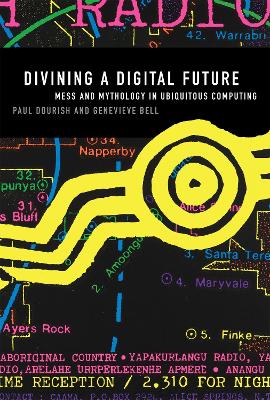The MIT Press
3 total works
A sociotechnical investigation of ubiquitous computing as a research enterprise and as a lived reality.
Ubiquitous computing (or ubicomp) is the label for a "third wave" of computing technologies. Following the eras of the mainframe computer and the desktop PC, ubicomp is characterized by small and powerful computing devices that are worn, carried, or embedded in the world around us. The ubicomp research agenda originated at Xerox PARC in the late 1980s; these days, some form of that vision is a reality for the millions of users of Internet-enabled phones, GPS devices, wireless networks, and "smart" domestic appliances. In Divining a Digital Future, computer scientist Paul Dourish and cultural anthropologist Genevieve Bell explore the vision that has driven the ubiquitous computing research program and the contemporary practices that have emerged-both the motivating mythology and the everyday messiness of lived experience.
Reflecting the interdisciplinary nature of the authors' collaboration, the book takes seriously the need to understand ubicomp not only technically but also culturally, socially, politically, and economically. Dourish and Bell map the terrain of contemporary ubiquitous computing, in the research community and in daily life; explore dominant narratives in ubicomp around such topics as infrastructure, mobility, privacy, and domesticity; and suggest directions for future investigation, particularly with respect to methodology and conceptual foundations.

